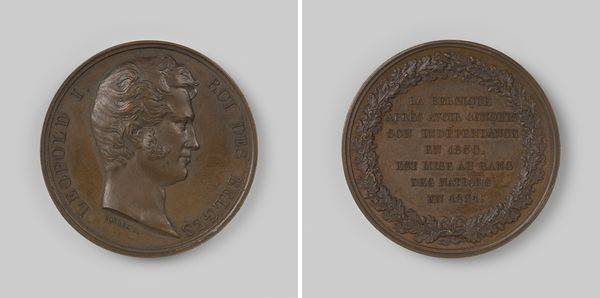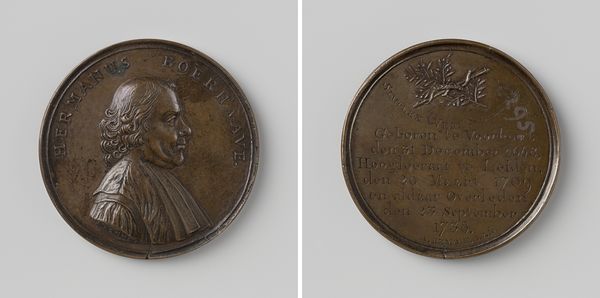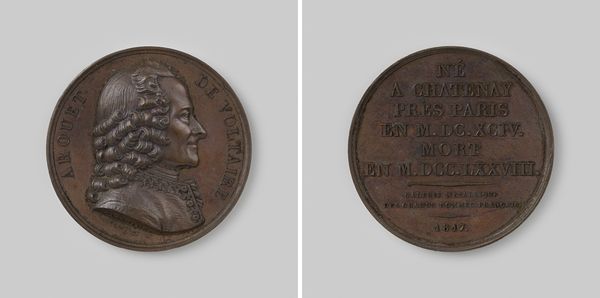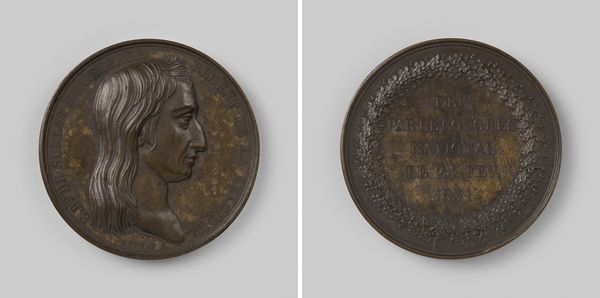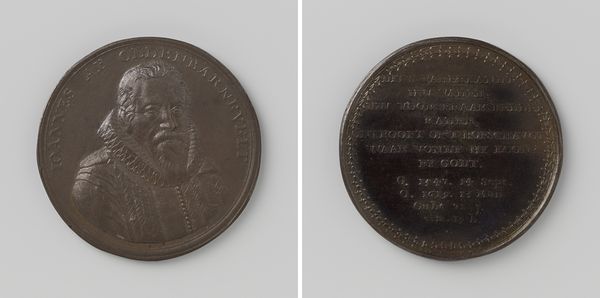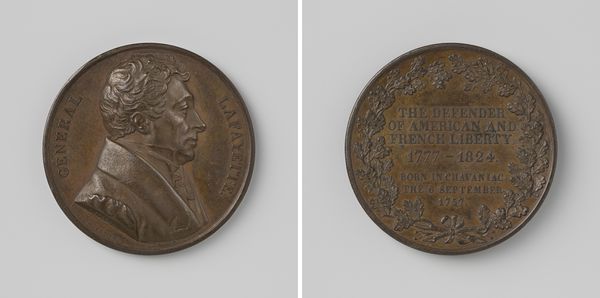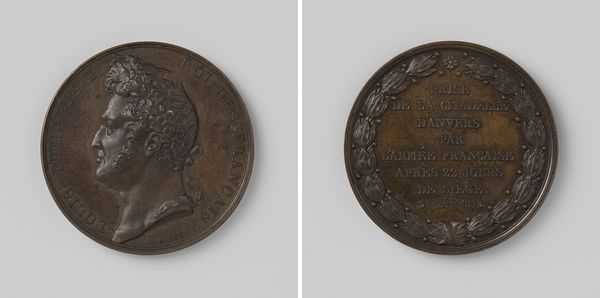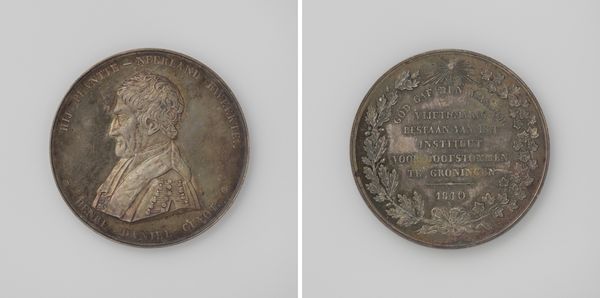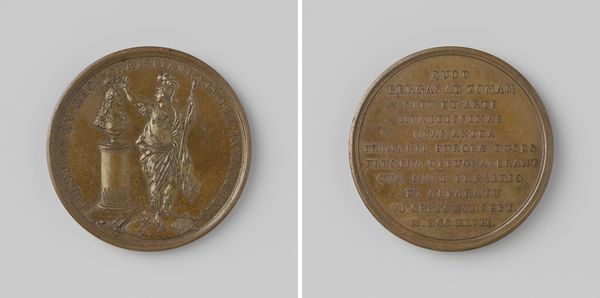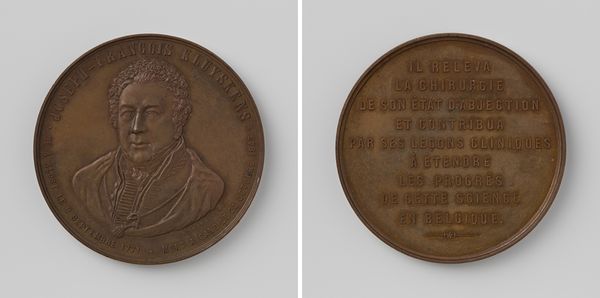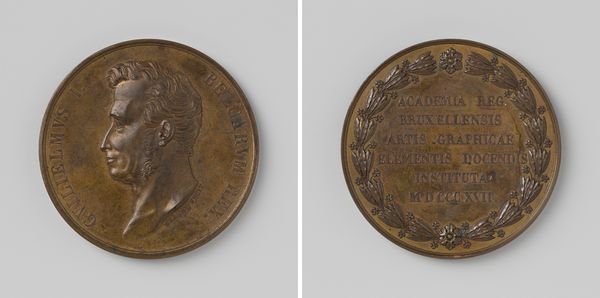
Inhuldiging van Willem V, prins van Oranje-Nassau, als erfelijk stadhouder van de Nederlanden 1766
0:00
0:00
Dimensions: diameter 4.5 cm, weight 32.90 gr
Copyright: Rijks Museum: Open Domain
Editor: This bronze medal from 1766 commemorates the inauguration of Willem V. The inscription curves along the edge, framing his profile. I’m curious, looking at this medal, how would you approach its interpretation? Curator: This medal offers a fascinating case study in form and function. Consider first the material itself, bronze. Its inherent properties – durability, malleability, its capacity for detailed inscription and relief – dictate the possibilities of the design. Notice the artist’s choices, such as the inscription which mirrors the circular form to guide the eye, and how that plays against the figure rendered in counterpoint. What relationship is established here? Editor: It seems the portrait is very detailed while the inscription looks more like it’s trying to fit the circle, is that significant? Curator: Exactly! Detail and inscription compete in ways that demonstrate tension and, frankly, invite you to think about figure versus ground, or text versus image in its function to present historical information in compressed representational form. But, let’s delve a little deeper and discuss symmetry. How is symmetry used here? Is it perfect? Where do we see deviations, and what might they signify? Editor: It is a powerful way to convey authority, and maybe suggests a degree of perfection. Are those little inconsistencies perhaps an acknowledgement of the human element within a system of governance? Curator: A keen observation. Medals, though often small, can open up significant pathways to understanding visual culture. Close inspection makes for engaging art!
Comments
No comments
Be the first to comment and join the conversation on the ultimate creative platform.
